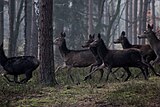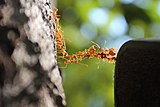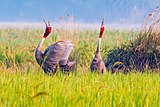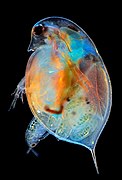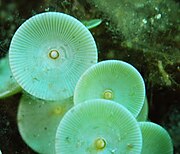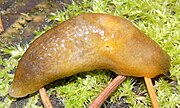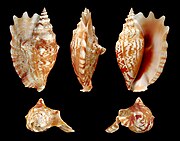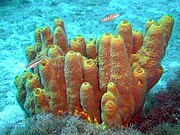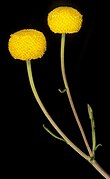| Revision as of 07:34, 25 November 2021 editMetropolitan90 (talk | contribs)Administrators52,403 edits →Misplaced Pages:Articles for deletion/Mass killings under communist regimes (4th nomination): new section← Previous edit | Revision as of 09:28, 25 November 2021 edit undoAshley Payne (talk | contribs)Extended confirmed users582 edits →AfD Mass killings by Communist regimes: new sectionTags: Mobile edit Mobile web edit Advanced mobile editNext edit → | ||
| Line 1,141: | Line 1,141: | ||
| Did you ever add this page to the AfD log? (See ], step III.) I can't find it on the log for any of the days from Nov. 22 through Nov. 25. Please add it to the current day's log since the AfD community was never informed of this AfD. Also please note that the "View log" link in the AfD goes to the nomination of this article from 2010, not the current one. Please fix that; I don't want to fix it myself because the AfD is so large that editing it slows down my computer. --] ] 07:34, 25 November 2021 (UTC) | Did you ever add this page to the AfD log? (See ], step III.) I can't find it on the log for any of the days from Nov. 22 through Nov. 25. Please add it to the current day's log since the AfD community was never informed of this AfD. Also please note that the "View log" link in the AfD goes to the nomination of this article from 2010, not the current one. Please fix that; I don't want to fix it myself because the AfD is so large that editing it slows down my computer. --] ] 07:34, 25 November 2021 (UTC) | ||
| == AfD Mass killings by Communist regimes == | |||
| I am utterly disgusted at your Orwellian attempt to delete the above article. | |||
| I an deeply concerned going through your edit history that you are introducing bias into Misplaced Pages. | |||
| I am now going to watch your edits and revert those that introduce a Leftist slant. ] (]) 09:28, 25 November 2021 (UTC) | |||
Revision as of 09:28, 25 November 2021
Archive
hatting and closing
wp:hatting and wp:close are not the same thing.Slatersteven (talk) 17:43, 21 June 2019 (UTC)
- I fail to understand the distinction, and as a contributor to content, I expect this information is redundant persnicketiness and haven't bothered to see the difference. cygnis insignis 17:47, 21 June 2019 (UTC)
- One difference is that hatting tend to be section of a discussion that are irrelevant (whilst the main discussion continues), whilst closing means that conversation over.Slatersteven (talk) 17:52, 21 June 2019 (UTC)
- I don't think the discussion is over, because, if verifiable, helping to create an element is as notable af. How are you today? cygnis insignis 17:57, 21 June 2019 (UTC)
- One difference is that hatting tend to be section of a discussion that are irrelevant (whilst the main discussion continues), whilst closing means that conversation over.Slatersteven (talk) 17:52, 21 June 2019 (UTC)
Please read wp:n.Slatersteven (talk) 09:01, 22 June 2019 (UTC)
not here to debate
I suggest reading wp:consensus, its also a policy, not an essay.Slatersteven (talk) 12:37, 22 June 2019 (UTC)
- Suggest is nicer :) I just made my first edit this evening to an article about a small bird, which I assume you noticed and then started repeating you messages to get my attention. I did not think it required a reply, but you are insisting otherwise? cygnis insignis 12:49, 22 June 2019 (UTC)
- I did not repeat it, I moved it (as you can see from the edit summery), as it was off topic and as derail. You really do need to start to wp:agf.Slatersteven (talk) 13:05, 22 June 2019 (UTC)
- I didn't read the edit summary. Why are you here? cygnis insignis 13:15, 22 June 2019 (UTC)
- Well there is one reason why I am here, you have now been told why I made that edit, to explain my actions. It is also to ask you to read and obey policy. I also ask you to rad WP:NOT. I will say no more, other then to suggest you need to take heed of our polices.Slatersteven (talk) 13:39, 22 June 2019 (UTC)
- Or to suggest that someone is not following policy by restating that, anyone can do that and that is all you do. Do you know the number of contributions you have made to AN/I? cygnis insignis 13:55, 22 June 2019 (UTC)
- Well there is one reason why I am here, you have now been told why I made that edit, to explain my actions. It is also to ask you to read and obey policy. I also ask you to rad WP:NOT. I will say no more, other then to suggest you need to take heed of our polices.Slatersteven (talk) 13:39, 22 June 2019 (UTC)
- I didn't read the edit summary. Why are you here? cygnis insignis 13:15, 22 June 2019 (UTC)
- I did not repeat it, I moved it (as you can see from the edit summery), as it was off topic and as derail. You really do need to start to wp:agf.Slatersteven (talk) 13:05, 22 June 2019 (UTC)
saturday afternoon/sunday afternoon
trust all is well
fyi - done - Max Kay - please feel free to edit or improve JarrahTree 05:14, 23 June 2019 (UTC)
- Taxonomic conundrum, smart birds, there is enough to keep me busy. Sigh, will have a look, but the kind of thing I avoid for a couple of reasons. I got a notice that gave me the tantalising few words of the message about this, but no access to rest; inbox and notifications crashed with blokes inviting me to go back to whereveristan. cygnis insignis 05:40, 23 June 2019 (UTC)
- whereveristan, intriguing, probably somewhere out to sea beyond Torndirrup_National_Park, probably 5th swell beyond the last breaks, and probably 100 metres underneath as well... JarrahTree 09:22, 23 June 2019 (UTC)
One Sec
Let's discuss this. Jehochman 18:21, 29 June 2019 (UTC)
- Go ahead. cygnis insignis 18:22, 29 June 2019 (UTC)
June 2019 Tree of Life Newsletter
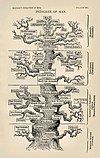
- June 2019—Issue 003
- Tree of Life
- Welcome to the Tree of Life newsletter!
|
|
|
|
| Project name | Relative WikiWork |
|---|---|
| Cats | 4.79 |
| Fisheries and fishing | 4.9 |
| Dogs | 4.91 |
| Viruses | 4.91 |
| ToL | 4.94 |
| Cetaceans | 4.97 |
| Primates | 4.98 |
| Sharks | 5.04 |
| All wikiprojects average | 5.05 |
| Dinosaurs | 5.12 |
| Equine | 5.15 |
| Bats | 5.25 |
| Mammals | 5.32 |
| Aquarium fishes | 5.35 |
| Hypericaceae | 5.38 |
| Turtles | 5.4 |
| Birds | 5.46 |
| Australian biota | 5.5 |
| Marine life | 5.54 |
| Animals | 5.56 |
| Paleontology | 5.57 |
| Rodents | 5.58 |
| Amphibians and Reptiles | 5.64 |
| Fungi | 5.65 |
| Bivalves | 5.66 |
| Plants | 5.67 |
| Algae | 5.68 |
| Arthropods | 5.69 |
| Hymenoptera | 5.72 |
| Microbiology | 5.72 |
| Cephalopods | 5.74 |
| Fishes | 5.76 |
| Ants | 5.79 |
| Gastropods | 5.8 |
| Spiders | 5.86 |
| Insects | 5.9 |
| Beetles | 5.98 |
| Lepidoptera | 5.98 |
- Spineless editors overwhelmed by stubs
Within the Tree of Life and its many subprojects, there is an abundance of stubs. Welcome to Misplaced Pages, what's new, right? However, based on all wikiprojects listed (just over two thousand), the Tree of Life project is worse off in average article quality than most. Based on the concept of relative WikiWork (the average number of "steps" needed to have a project consisting of all featured articles (FAs), where stub status → FA consists of six steps), only seven projects within the ToL have an average rating of "start class" or better. Many projects, particularly those involving invertebrates, hover at an average article quality slightly better than a stub. With relative WikiWorks of 5.98 each, WikiProject Lepidoptera and WikiProject Beetles have the highest relative WikiWork of any project. Given that invertebrates are incredibly speciose, it may not surprise you that many articles about them are lower quality. WikiProject Beetles, for example, has over 20 times more articles than WikiProject Cats. Misplaced Pages will always be incomplete, so we should take our relatively low WikiWork as motivation to write more articles that are also better in quality.
- Editor Spotlight: Showing love to misfit taxa
We're joined for this month's Editor Spotlight by NessieVL, a long-time contributor who lists themselves as a member of WikiProject Fungus, WikiProject Algae, and WikiProject Cephalopods.
1) Enwebb: How did you come to edit articles about organisms and taxonomic groups?
- Nessie: The main force, then and now, driving me to create or edit articles is thinking "Why isn't there an article on that on Misplaced Pages?" Either I'll read about some rarely-sighted creature in the deep sea or find something new on iNaturalist and want to learn more. First stop (surprise!) is Misplaced Pages, and many times there is just a stub or no page at all. Sometimes I just add the source that got me to the article, not sometimes I go deep and try to get everything from the library or online journals and put it all in an article. The nice thing about taxa is the strong precedent that all accepted extant taxa are notable, so one does not need to really worry about doing a ton of research and having the page get removed. I was super worried about this as a new editor: I still really dislike conflict so if I can avoid it I do. Anyway, the most important part is stitching an article in to the rest of Misplaced Pages: Linking all the jargon, taxonomers, pollinators, etc., adding categories, and putting in the correct WikiProjects. Recently I have been doing more of the stitching-in stuff with extant articles. The last deep-dive article I made was Karuka at the end of last year, which is a bit of a break for me. I guess it's easier to do all the other stuff on my tablet while watching TV.
2) Enwebb: Many editors in the ToL are highly specialized on a group of taxa. A look at your recently created articles includes much diversity, though, with viruses, bacteria, algae, and cnidarians all represented—are there any commonalities for the articles you work on? Would you say you're particularly interested in certain groups?
- Nessie: I was a nerd from a time when that would get you beat up, so I like odd things and underdogs. I also avoid butting heads, so not only do I find siphonophores and seaweeds fascinating I don't have to worry about stepping on anyone's toes. I go down rabbitholes where I start writing an article like Mastocarpus papillatus because I found some growing on some rocks, then in my research I see it is parasitized by Pythium porphyrae, which has no article, and how can that be for an oomycete that oddly lives in the ocean and also attacks my tasty nori. So then I wrote that article and that got me blowing off the dust on other Oomycota articles, encouraged by the pull of propagating automatic taxoboxes. Once you've done the taxonomy template for the genus, well then you might as well do all the species now that the template is taken care of for them too. and so on until I get sucked in somewhere else. I think it's good to advocate for some of these 'oddball' taxa as it makes it easier for editors to expand their range from say plants to the pathogenic microorganisms of their favorite plant.
- My favorite clades though, It's hard to pick for a dilettante like me. I like working on virus taxonomy, but I can't think of a specific virus species that I am awed by. Maybe Tulip breaking virus for teaching us economics or Variola virus for having so many smallpox deities, one of which was popularly sung about by Desi Arnaz and then inspired the name of a cartoon character who was then misremembered and then turned into a nickname for Howard Stern's producer Gary Dell'Abate. Sorry, really had to share that chain, but for a species that's not a staple food it probably has the most deities. But anyway, for having the most species that wow me, I love a good fungus or algae, but that often is led by my stomach. Also why I seem to research so many plant articles. You can't eat siphonophores, at least I don't, but they are fascinating with their federalist colonies of zooids. Bats are all amazing, but the task force seems to have done so much I feel the oomycetes and slime moulds need more love. Same thing with dinosaurs (I'm team Therizinosaurus though). But honestly, every species has that one moment in the research where you just go, wow, that's so interesting. For instance, I loved discovering that the picture-winged fly (Delphinia picta) has a mating dance that involves blowing bubbles. Now I keep expecting them to show me when they land on my arm, but no such luck yet.
3) Enwebb: I noticed that many of your recent edits utilize the script Rater, which aids in quickly reassessing the quality and importance of an article. Why is it important to update talk page assessments of articles? I also noticed that the quality rating you assign often aligns with ORES, a script that uses machine-learning to predict article quality. Coincidence?
- Nessie: I initially started focusing on WikiProject talk page templates because they seem to be the key to data collecting and maintenance for articles, much more so than categories. This is where you note of an article needs an image, or audio, or a range map. It's how the cleanup listing bot sorts articles, and how Plantdrew does his automated taxobox usage stats. The latter inspired me to look for articles on organisms that are not assigned to any ToL WikiProjects which initially was in the thousands. I got it down to zero with just copypasta so you can imagine I was excited when I saw the rater tool. Back then I rated everything stub/low because it was faster: I couldn't check every article for the items on the B-class checklists. Plus each project has their own nuances to rating scales and I thought the editors in the individual projects would take it from there. I also thought all species were important, so how can I choose a favorite? Now it is much easier with the rater tool and the apparent consensus with Abductive's method of rating by the pageviews (0-9 views/day is low, 10-99 is med, 100-999 is high...). For the quality I generally go by the ORES rating, you caught me. It sometimes is thrown off by a long list of species or something, but it's generally good for stub to C: above that needs formal investigation and procedures I am still learning about. It seems that in the ToL projects we don't focus so much on getting articles to GA/FA so it's been harder to pick up. It was a little culture shock when I went on the Discord server and it seemed everyone was obsessed with getting articles up in quality. I think ToL is focusing on all the missing taxa and (re)organizing it all, which when you already have articles on every anime series or whatever you can focus on bulking the articles up more. In any event, on my growing to-do list is trying to get an article up to FA or GA and learn the process that way so I can better do the quality ratings and not just kick the can down the road.
4) Enwebb: What, if anything, can ToL and its subprojects do to better support collaboration and coordination among editors? How can we improve?
- Nessie: I mentioned earlier that the projects are the main way maintenance is done. And it is good that we have a bunch of subprojects that let those tasks get broken up into manageable pieces. Frankly I'm amazed anything gets done with WikiProject Plants with how huge its scope is. Yet this not only parcels out the work but the discussion as well. A few editors like Peter coxhead and Plantdrew keep an eye on many of the subprojects and spread the word, but it's still easy for newer editors to get a little lost. There should be balance between the lumping and splitting. The newsletter helps by crossing over all the WikiProjects, and if the discord channel picked up that would help too. Possibly the big Enwiki talk page changes will help as well.
5) Enwebb: What would surprise the ToL community to learn about your life off-Misplaced Pages?
- Nessie: I'm not sure anything would be surprising. I focus on nature offline too, foraging for mushrooms or wild plants and trying to avoid ticks and mosquitos. I have started going magnet fishing lately, more to help clean up the environment than in the hopes of finding anything valuable. But it would be fun to find a weapon and help solve a cold case or something.
- June DYKs
|
You are receiving this because you added your name to the subscribers list of the WikiProject Tree of Life. If you no longer wish to receive the newsletter, please remove your name.
sent by ZLEA via MediaWiki message delivery (talk) 20:29, 3 July 2019 (UTC)
AGF
Re this. Please try to assume good faith when talking to others. Casliber and I have known each other for a good few many years now and I have his talk page on my watchlist. We have also assisted each other at FAC, when the occasion has called. Please learn some manners. Thanks. Cassianto 14:29, 4 July 2019 (UTC)
- And we met twelve hours ago when you made a personal attack on another admin, I'm sure that was not coincidence when you interjected with a comment that has no bearing on either discussion. You are not a free person, I cannot liberate you from that, but I am genuinely sympathetic to someone so trapped in internet rage. I'm assuming you are male and that chastising others is your reward for whatever positive contribution you have made. I wish you well. cygnis insignis 14:41, 4 July 2019 (UTC)
- Cygnis insignis you are aware of the background of the players on Eric Corbett's page? Actually it's not worth going over now as any heated discussion is likely to end up in more blocks. Cas Liber (talk · contribs) 14:47, 4 July 2019 (UTC)
- No, I am not aware, yet is this the sort of stuff that has no business here and nothing to to with our discussion. I put a view that he should be blocked, based on recent activity that turned out to be well established belligerence. cygnis insignis 15:31, 4 July 2019 (UTC)
- Can you point out the personal attack you wax so lyrical about, and what does my gender have to do with this? I'll allow you some time to apologise for your misandrous comment and outright lie before I report you at ANI. Cassianto 15:02, 4 July 2019 (UTC)
- Nice to see that word has gain currency at least, it is telling that is was not in common usage. What's upset you, me tapping on the bars of your mind's prison. cygnis insignis 15:31, 4 July 2019 (UTC)
- As I've just said elsewhere, Cassianto has done a lot of constructive work on Sophie Dahl recently so he is here to write the encyclopedia; if you treat him with respect, he'll do the same to you - if you start threatening him with blocks, he's not going to take kindly to it just like any other editor would. As I've also just said elsewhere, civility in my opinion is respecting the views and ideals of people that are quite different to your own. I've had a go at Featured Article Candidates and come away feeling like a second-rate writer on more than a number of occasions, so I will tip my hat to anyone who can negotiate FAC on multiple occasions successfully. It really does train you to be responsive and respectful towards people, and keep your eye focused on what's important here. Ritchie333 16:03, 4 July 2019 (UTC)
- You need to clarify the relevance, or recognise you got the wrong end of the stick, I haven't been threatening anyone with anything. Most seem to be commenting with some preformed idea of what I need to told in this situation, it makes responding pointless if everyone is reading my mind. The report I threatened to make was to my mum, who will say that he sounds like a very troubled person. cygnis insignis 16:18, 4 July 2019 (UTC)
- An answer on this would be good @Ritchie333:, because I'm just reading irrelevancies, and this leaves me looking I have something to answer for to those who are looking for people to thug. As it is, I'm reading the FAC commentary as a reference to what SN54129 patronisingly suggested was my role. cygnis insignis 16:40, 4 July 2019 (UTC)
- Thanks for talking about me behind my back, much appreciated; I'll just leave this here. ——SerialNumber54129 17:00, 4 July 2019 (UTC)
- Goes down to the dance … Is this being discussed offline? cygnis insignis 17:03, 4 July 2019 (UTC)
- Not me, scouts' honour. Anyway, too busy trying on the leather jacket, baggy black pants... ;) ——SerialNumber54129 18:48, 4 July 2019 (UTC)
- Probably not, I think maybe you have different settings but for most we have it set to automatically watchlist certain pages. I have Eric Corbett and Casliber for instance the discussion there drew my attention here. The thing that you are missing is that for the most part the editors here have interacted with each other in one form or another as a lot of us have been here 10 years, including you. Sometimes when you cause waves that causes more eyes on your actions and AGF is a flag that can do that. I'm not here to criticize you but when you make comments like "people looking to thug" or the like it doesn't make for a happy discussion. With that I've said my piece and sole issue with your edit, the reversion of the other persons discussion comment and will comment no further as it will as I daid on Cas page will pour gasoline on that fire and you should be able to move on from a relatively minor issue rather easily. Hell in a Bucket (talk) 17:13, 4 July 2019 (UTC)
- And you are …? cygnis insignis 17:30, 4 July 2019 (UTC)
- I'm Hell in a Bucket Hell in a Bucket (talk) 17:35, 4 July 2019 (UTC)
- Good answer. cygnis insignis 17:38, 4 July 2019 (UTC)
- Good reply. I am Gerda (and Hell in a Bucket was the first user whom I met on Wikipeida, fondly remembered). What do you think of this? --Gerda Arendt (talk) 09:30, 12 July 2019 (UTC)
- Good answer. cygnis insignis 17:38, 4 July 2019 (UTC)
- I'm Hell in a Bucket Hell in a Bucket (talk) 17:35, 4 July 2019 (UTC)
- And you are …? cygnis insignis 17:30, 4 July 2019 (UTC)
- Goes down to the dance … Is this being discussed offline? cygnis insignis 17:03, 4 July 2019 (UTC)
- Thanks for talking about me behind my back, much appreciated; I'll just leave this here. ——SerialNumber54129 17:00, 4 July 2019 (UTC)
- An answer on this would be good @Ritchie333:, because I'm just reading irrelevancies, and this leaves me looking I have something to answer for to those who are looking for people to thug. As it is, I'm reading the FAC commentary as a reference to what SN54129 patronisingly suggested was my role. cygnis insignis 16:40, 4 July 2019 (UTC)
- You need to clarify the relevance, or recognise you got the wrong end of the stick, I haven't been threatening anyone with anything. Most seem to be commenting with some preformed idea of what I need to told in this situation, it makes responding pointless if everyone is reading my mind. The report I threatened to make was to my mum, who will say that he sounds like a very troubled person. cygnis insignis 16:18, 4 July 2019 (UTC)
- As I've just said elsewhere, Cassianto has done a lot of constructive work on Sophie Dahl recently so he is here to write the encyclopedia; if you treat him with respect, he'll do the same to you - if you start threatening him with blocks, he's not going to take kindly to it just like any other editor would. As I've also just said elsewhere, civility in my opinion is respecting the views and ideals of people that are quite different to your own. I've had a go at Featured Article Candidates and come away feeling like a second-rate writer on more than a number of occasions, so I will tip my hat to anyone who can negotiate FAC on multiple occasions successfully. It really does train you to be responsive and respectful towards people, and keep your eye focused on what's important here. Ritchie333 16:03, 4 July 2019 (UTC)
- Nice to see that word has gain currency at least, it is telling that is was not in common usage. What's upset you, me tapping on the bars of your mind's prison. cygnis insignis 15:31, 4 July 2019 (UTC)
- Cygnis insignis you are aware of the background of the players on Eric Corbett's page? Actually it's not worth going over now as any heated discussion is likely to end up in more blocks. Cas Liber (talk · contribs) 14:47, 4 July 2019 (UTC)
- I liked it ] Hell in a Bucket (talk) 17:42, 4 July 2019 (UTC)
- Could never break into their music to get an overview, probably because I never made the pilgrimage and experienced it live, but immense respect for their works. cygnis insignis 18:00, 4 July 2019 (UTC)
- Bloody progressive attitudes to bootlegging though... ——SerialNumber54129 18:07, 4 July 2019 (UTC)
- Ja, of their own material tho'. They weren't poor and did works with their money, seemed a lot happier for that. cygnis insignis 18:10, 4 July 2019 (UTC)
- SN, the cool thing they do now is that when you buy the tix to the show, they give you a copy of the show direct from the soundboard and professionally done by the band. They do it in Nugnetz. I will be there for the shows tomorrow and Saturday as Dead and Co. end their summer tour, it is my yearly pilgrimage and Cygnis if you ever have the time, go to it live there is nothing better. John Mayer ended up being a pleasant surprise. Hell in a Bucket (talk) 18:15, 4 July 2019 (UTC)
- Don't they have the MotB anymore? ——SerialNumber54129 18:24, 4 July 2019 (UTC)
- I'm a little embarassed to say I don't know what that is, they still allow taping in general and trading via archive.org but if you buy a ticket for a show and can get the soundboard I do that. Hell in a Bucket (talk) 18:27, 4 July 2019 (UTC)
- Feeling sentimental ( youtu.be/ienZCBtPjWw?t=8563 ). El_C 18:32, 4 July 2019 (UTC)
- Ah, 77 was a good vintage: GD and PF within months of each other. Before my time, but. ——SerialNumber54129 18:48, 4 July 2019 (UTC)
- Feeling sentimental ( youtu.be/ienZCBtPjWw?t=8563 ). El_C 18:32, 4 July 2019 (UTC)
- I'm a little embarassed to say I don't know what that is, they still allow taping in general and trading via archive.org but if you buy a ticket for a show and can get the soundboard I do that. Hell in a Bucket (talk) 18:27, 4 July 2019 (UTC)
- Don't they have the MotB anymore? ——SerialNumber54129 18:24, 4 July 2019 (UTC)
- SN, the cool thing they do now is that when you buy the tix to the show, they give you a copy of the show direct from the soundboard and professionally done by the band. They do it in Nugnetz. I will be there for the shows tomorrow and Saturday as Dead and Co. end their summer tour, it is my yearly pilgrimage and Cygnis if you ever have the time, go to it live there is nothing better. John Mayer ended up being a pleasant surprise. Hell in a Bucket (talk) 18:15, 4 July 2019 (UTC)
- Ja, of their own material tho'. They weren't poor and did works with their money, seemed a lot happier for that. cygnis insignis 18:10, 4 July 2019 (UTC)
- Bloody progressive attitudes to bootlegging though... ——SerialNumber54129 18:07, 4 July 2019 (UTC)
- Could never break into their music to get an overview, probably because I never made the pilgrimage and experienced it live, but immense respect for their works. cygnis insignis 18:00, 4 July 2019 (UTC)
Toxins
I'd like to stay focused in the discussion I began. I am German and may have extra difficulties that don't belong there. I am afraid that the term "toxic behaviour" was derived from "incredibly toxic personalities", and - even if not - is too vague, too general, and meaning different things to different readers, so making me think that we should "ban" it. English is rich, and I am sure there are better words. --Gerda Arendt (talk) 15:18, 11 July 2019 (UTC)
- My intent was to question that premise, that describing a contribution as potentially toxic is not an indictment of an individual. I did not expect that to be well received, or for a wave of self-awareness to change the course of the discussion, it is, however, all I planned to say, if that is a concern for the discussion you began. cygnis insignis 15:46, 11 July 2019 (UTC)
- About the premise, perhaps ask the one who coined the "personalities" phrase? 2009, and in the 2014 speech, almost every observer knew that the plural term was for one specifically, Eric Corbett.
- I wouldn't oppose "toxic contribution" as long as it's a defined contribution, nailed with a diff or two. "toxic behavior" in general, however, seems - at least to me - broader, and borderline to mean a trait of a person, rather than one disturbing contribution among perhaps 100 "healthy" ones. Repeating: it's less the meaning but more the vagueness of the term that I find problematic. --Gerda Arendt (talk) 16:02, 11 July 2019 (UTC)
- @Gerda Arendt:, I removed my post at your discussion, and this thread, but there still appears to be something unresolved and I expect more repercussions. I am familiar with some of your contributions and know you have been very active for as long as I have been here. You ask above, "What do you think of this? ", I don't know what I am supposed to think. Is it the content or users you wish to draw to my attention? Use German if that allows you to be clearer, more direct and explicit, I can read the language when it is important (like reading Kafka in the original). cygnis insignis 13:42, 12 July 2019 (UTC)
- Good to know that you can read Kafka in the original. You removed you post on Framban, and this, and I didn't know what to think of it, especially disturbed by an edit summary mentioning grief. Forget the question if you think someone would say "Your behaviour is toxic" to a person face-to-face, when my real question was if I caused you grief. --Gerda Arendt (talk) 13:55, 12 July 2019 (UTC)
- I regretted posting in the thread as it appeared that I was going to be targeted elsewhere as a consequence, that my opinion would draw the attention of other users who see this a cause célèbre and that I am an adversary. The expression for this is "causing me grief". cygnis insignis 14:13, 12 July 2019 (UTC)
- Do I understand (verstehe ich richtig) that the grief was about "going to be"? - I don't want to cause grief, actually not even indirectly, - sorry if I did. Here, I didn't try to "target", only to understand better. I am ready now to just leave, and without any intention to pursue the topic further anyway, anywhere ;) --Gerda Arendt (talk) 14:45, 12 July 2019 (UTC)
- I don't think your actions need justification, but hope you recognise they have consequences. I am currently lacking anything profound or insightful to say about the situation, so wont add to the noise and give an opening to those who disrupting mainspace contributions, rooting out quislings and going on witch hunts, asserting that users are betraying the site by moving toward solutions. This response is itself potentially toxic, and I know that I have made comments that were toxins, that is all I have control over. cygnis insignis 15:10, 12 July 2019 (UTC)
- Do I understand (verstehe ich richtig) that the grief was about "going to be"? - I don't want to cause grief, actually not even indirectly, - sorry if I did. Here, I didn't try to "target", only to understand better. I am ready now to just leave, and without any intention to pursue the topic further anyway, anywhere ;) --Gerda Arendt (talk) 14:45, 12 July 2019 (UTC)
- I regretted posting in the thread as it appeared that I was going to be targeted elsewhere as a consequence, that my opinion would draw the attention of other users who see this a cause célèbre and that I am an adversary. The expression for this is "causing me grief". cygnis insignis 14:13, 12 July 2019 (UTC)
- Good to know that you can read Kafka in the original. You removed you post on Framban, and this, and I didn't know what to think of it, especially disturbed by an edit summary mentioning grief. Forget the question if you think someone would say "Your behaviour is toxic" to a person face-to-face, when my real question was if I caused you grief. --Gerda Arendt (talk) 13:55, 12 July 2019 (UTC)
Precious
Western Australia irritans
Thank you for quality articles about plants begun in 2007 with Alyogyne huegelii, moving to geckos such as Christinus alexanderi, people such as Albert Frederick Calvert, and Triodia irritans in 2019, for expanding the crescent nail-tail wallaby and others, for "Good news for the local ecology." - Westralian, you are an awesome Wikipedian!
You are recipient no. 2247 of Precious, a prize of QAI. --Gerda Arendt (talk) 16:01, 12 July 2019 (UTC)
- LOL, I can be "precious", another sense of the word, and irritating assumed authority is a life long avocation. Well met, and thanks for the recognition on the crescent wallaby , the other works are just exercises for polishing the articles of my primary focus. The first one is named for Carl von Hügel, whose life is very interesting, he was possibly the first European to recognise the extraordinary beauty of my 'country', Southwest Australia. cygnis insignis 16:23, 12 July 2019 (UTC)
- I was there only for few days but loved it! --Gerda Arendt (talk) 16:37, 12 July 2019 (UTC)
- And thanks from me for your support in difficult times! Gderrin (talk) 08:42, 15 July 2019 (UTC)
- Feh, too easy, your contribution is a profuse amount of good and usable article content, there is usually little to say and it can be a red flag when people argue otherwise. cygnis insignis 08:57, 15 July 2019 (UTC)
Noongar
Per WP:TPO you cannot remove my edits at Noongar. You may raise an issue on my Talk page, or you may raise a discussion at WP:ANI concerning my behavior, but you may not alter my edits. Thanks, Mathglot (talk) 06:44, 17 July 2019 (UTC)
- A privilege afforded to you some how? What an utterly redundant set of contributions. cygnis insignis 06:48, 17 July 2019 (UTC)
- Your revert of my talk page comment here was invalid per WP:TPO as was you inaccurate edit summary. Please do not alter edits by other editors, per WP:TPO. If those editors have violated policy, please raise a discussion on their Talk page, or at WP:ANI. In the latter case, beware the WP:BOOMERANG. Cheers, Mathglot (talk) 07:06, 17 July 2019 (UTC)
- This is your reward for volunteering here? it's a bit sad, and pompous. You, not another editor, made the most extensive refactoring of a talk page I ever recall seeing, I assumed to moderate the off-topicness, then posed a non-question to set up your rude proclamations. cygnis insignis 07:19, 17 July 2019 (UTC)
Thanks22:41, 17 July 2019 (UTC)Cls14 (talk)
Thanks for trying to help me out with Cassianto. He is a disgusting editor who thinks he owns articles and makes life miserable for other editors Cls14 (talk) 22:41, 17 July 2019 (UTC)
Would you kindly update the taxobox for Propleopus & Ekaltadeta?
The two genera, alongside the Musky rat-kangaroo are currently considered part of Hypsiprymnodontidae, rather than the family Potoroidae. There are papers that can back it up, which are cited in the articles. I would do it myself, but I have no idea how to properly edit the automatic taxobox. Monsieur X (talk) 12:13, 19 July 2019 (UTC)
- @Monsieur X: Ugh, thank you for reminding me M. X, there is a lot of weight given to a deeper separation of the phylogeny in the fossil taxa. I've noticed your fixes on my watchlist, often things I missed during my rough additions, cheers for that. I will have a look now that I know more about the classification, and that someone will be double checking. cygnis insignis 12:27, 19 July 2019 (UTC)
- I revised the template here, adding a citation what I think is agreed confirms acceptance of the arrangement. If you want to edit an autotaxobox the template is accessible from the red icon to the right of "scientific classification". cygnis insignis 12:53, 19 July 2019 (UTC)
- Thanks for updating. I didn't even notice the red pencil icon thingy, I'll give it a try next time I see some outdated classification. Monsieur X (talk) 14:44, 19 July 2019 (UTC)
- If you convert to an autobox and the parent doesn't exist, it will throw out a link with an autofilled template ready to create; this is common with the species box for monotypic fossil genera. Thanks again for flagging that concern. cygnis insignis 14:52, 19 July 2019 (UTC)
- Thanks for updating. I didn't even notice the red pencil icon thingy, I'll give it a try next time I see some outdated classification. Monsieur X (talk) 14:44, 19 July 2019 (UTC)
- I revised the template here, adding a citation what I think is agreed confirms acceptance of the arrangement. If you want to edit an autotaxobox the template is accessible from the red icon to the right of "scientific classification". cygnis insignis 12:53, 19 July 2019 (UTC)
Eucalyptus gomphocephala

Hello Cygnis insignis,
I've done a bit of a clean up of the taxonomy section of E. gomphocephala but can't find a ref. for "type collection was made by Jean-Baptiste Leschenault at the Vasse River during 1802, while serving on the Baudin expedition". I'm sure it's correct but it would be good to add a ref. Can you help? Gderrin (talk) 01:10, 20 July 2019 (UTC)
- Of course, especially if that was something I overlooked: tracking the Baudin expedition makes my head spin and that may be a puzzle I created. cygnis insignis 01:24, 20 July 2019 (UTC)
- Sssh! I can keep secrets. Gderrin (talk) 01:33, 20 July 2019 (UTC)
Disambiguation link notification for July 21
An automated process has detected that when you recently edited Corymbia calophylla, you added a link pointing to the disambiguation page Western Mail (check to confirm | fix with Dab solver).
(Opt-out instructions.) --DPL bot (talk) 08:05, 21 July 2019 (UTC)
Disambiguation link notification for July 28
An automated process has detected that when you recently edited Chaeropus, you added links pointing to the disambiguation pages John Gilbert and Bernard Woodward (check to confirm | fix with Dab solver).
(Opt-out instructions.) --DPL bot (talk) 09:29, 28 July 2019 (UTC)
Your help desk question
You didn't get a response to this question but maybe WP:VPT could help.— Vchimpanzee • talk • contributions • 19:18, 29 July 2019 (UTC)
- @Vchimpanzee:, good of you to let me know, cheeers. cygnis insignis 23:57, 29 July 2019 (UTC)
If
you deem that art-work as non-problematic, I might gently suggest staying away from these areas. Also, it would have taken you a few seconds to discover that the IP has been already blocked for being a sock of a LTA. Regards, ∯WBG 17:44, 30 July 2019 (UTC)
- I read a diff that contained what might be viewed as evidence, and didn't see any art-work, or edit summary, or have any inclination to assume you do things for good reasons. This is where we stand, I don't forget when someone screws around with article space. cygnis insignis 18:46, 30 July 2019 (UTC)
- I have no clue about what you mean by the last sentence; what tinkering with main-space don't you forget? I also note that you operate by assuming bad faith. Ta, ∯WBG 19:10, 30 July 2019 (UTC)
- Of course you don't remember that, or everywhere you shit, nor any other of your habitual emissions: you do those every day. cygnis insignis 19:27, 30 July 2019 (UTC)
- Please remember to abide by WP:NPA. Also, please provide a diff behind your allegations per our best-practice-notes or withdraw. And, I am genuinely curious to hear someone raising any (legitimate) query about my main-space-editing or actions, thereof. Interaction-Analyser threw nothing else than this. ∯WBG 19:31, 30 July 2019 (UTC)
- If it were my creation I would have no hesitancy, and open evidence inspired the action I think, so not my business to paint a target on someone else. However, you are right, your antics are no excuse for my rudeness, your harrying of others is a privilege that is invisible to yourself, I assume you think that normal and good faith behaviour. cygnis insignis 20:03, 30 July 2019 (UTC)
- Yes, that was it. cygnis insignis 20:03, 30 July 2019 (UTC)
- Please remember to abide by WP:NPA. Also, please provide a diff behind your allegations per our best-practice-notes or withdraw. And, I am genuinely curious to hear someone raising any (legitimate) query about my main-space-editing or actions, thereof. Interaction-Analyser threw nothing else than this. ∯WBG 19:31, 30 July 2019 (UTC)
- Of course you don't remember that, or everywhere you shit, nor any other of your habitual emissions: you do those every day. cygnis insignis 19:27, 30 July 2019 (UTC)
- I have no clue about what you mean by the last sentence; what tinkering with main-space don't you forget? I also note that you operate by assuming bad faith. Ta, ∯WBG 19:10, 30 July 2019 (UTC)
Tree of Life Newsletter

- July 2019—Issue 004
- Tree of Life
- Welcome to the Tree of Life newsletter!
|
|
|
|
|
The WikiCup, an annual editing competition, is now in its fourth round. Casliber, consistent participant since 2010 and winner in 2016, is currently dominating Group A with 601 points. Largely responsible is the successful Featured Article nomination of Masked booby. The other remaining Tree of Life participant, Enwebb, is participating in her first ever WikiCup. In this round, she has a grand total of...5 points. But with the recent Featured Article nomination of Megabat, she stands to gain 600 points if successful. As it stands, though, it appears that at least one ToL editor is headed to the fifth and final round of 8 contestants, which begins September 1. Thus far, all participants in the WikiCup have generated 17 Featured Articles, 116 Good Articles, 16 Featured Lists, and 57 Featured Pictures. The Good Article Nominations backlog has been reduced as well, with 286 Good Article Reviews. |
|
For this month's editor spotlight we're joined by Charlesjsharp, a longtime contributor to Wikimedia Commons with a plethora of featured pictures on English Misplaced Pages. 1) Starsandwhales: How long have you been editing Misplaced Pages, and how did you get interested? How did you begin your journey of photographing wildlife?
 2) S&W: Over the years, you've taken photos of many different organisms from birds to insects to big cats; you have an extensive list of favorite images. Which animals have been the most exciting for you to photograph?
3) S&W: Many articles under ToL have requests for people to add images that can go unanswered. What can the community do to improve the coverage of different organisms on Misplaced Pages, especially when it comes to images?

4) S&W: What advice would you give to people new to photographing wildlife?
5) S&W: What would the Tree of Life community be surprised to learn about your life off-wiki?
* An example of cumbersome code: getting the layout of my responses to your questions. So dated, and no online spellchecker. |
 Cycloseris distorta Cycloseris distorta
 Tiny the Wonder, killing rats Tiny the Wonder, killing ratsat the Blue Anchor Tavern 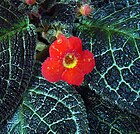 Episcia cupreata flower Episcia cupreata flower
|
You are receiving this because you added your name to the subscribers list of the WikiProject Tree of Life. If you no longer wish to receive the newsletter, please remove your name.
Sent by ZLEA via MediaWiki message delivery (talk) 18:59, 1 August 2019 (UTC)
Disambiguation link notification for August 4
An automated process has detected that when you recently edited Palorchestes, you added a link pointing to the disambiguation page Rostrum (check to confirm | fix with Dab solver).
(Opt-out instructions.) --DPL bot (talk) 09:26, 4 August 2019 (UTC)
gah
the territory name was in lower case, the actual location was hidden ... just reading it now there is an outside chance the random punter guesses where it is... JarrahTree 12:37, 12 August 2019 (UTC)
- I make assumptions like that all the time, it is the kind of thing I would pick up in copyediting. I'm tending to work around families of taxa, and there are a lot rough procedures for getting things in order; pardon when that creates confusion for ratings. ~ cygnis insignis 12:48, 12 August 2019 (UTC)
- gah - i remembr our online conversations of yonks ago in terminology that would even leave ourselves confused - no need for furries or worries, or pardons, the turkeys take care of the chaos here, their vocalisations and iterations are enough to carry some extra terrestrial travel that further light years into the cosmos a la late douglas adams and his rather dated obsession with improbability... JarrahTree 13:06, 12 August 2019 (UTC)
- Nice to be reminded of that, I'm finding it difficult to get that flow at the moment. Certainty is the fashion now, statements uncoloured by facts. ~ cygnis insignis 13:17, 12 August 2019 (UTC)
- gah - i remembr our online conversations of yonks ago in terminology that would even leave ourselves confused - no need for furries or worries, or pardons, the turkeys take care of the chaos here, their vocalisations and iterations are enough to carry some extra terrestrial travel that further light years into the cosmos a la late douglas adams and his rather dated obsession with improbability... JarrahTree 13:06, 12 August 2019 (UTC)
Greetings
| File:The Riddler.jpg | Nice to meet you |
| ~ please leave my friend alone ~ EEng ~ I hope she/he does not mind, I forged the signature ~ ~mitch~ (talk) 16:15, 15 August 2019 (UTC) |
- I had a concern, please use more words to outline yours. ~ cygnis insignis 16:25, 15 August 2019 (UTC)
- And thread your reply, or I will ignore these posts. ~ cygnis insignis 16:47, 15 August 2019 (UTC)
- Well ~ I thought maybe in a couple of years I would like to be an administrator ~ mostly dealing with cite work and sources ~
(and of course the Mumbo jumbo of vandals).Wood Chucks Chucking Wood on YouTube ~mitch~ (talk) 16:40, 15 August 2019 (UTC)
- Well ~ I thought maybe in a couple of years I would like to be an administrator ~ mostly dealing with cite work and sources ~
- And thread your reply, or I will ignore these posts. ~ cygnis insignis 16:47, 15 August 2019 (UTC)
- I had a concern, please use more words to outline yours. ~ cygnis insignis 16:25, 15 August 2019 (UTC)
- You should lift your sights higher than becoimng a janitor here. What has this to do with my complaint elsewhere, cousin, I am not casual in my critique of the potential for disruption by those who follow the user's lead. ~ cygnis insignis 17:27, 15 August 2019 (UTC)
- By the way nice to meet you ~ ~mitch~ (talk) 20:59, 15 August 2019 (UTC)
- Excuse me if I reserve my opinion of the niceness of all this, but be well. ~ cygnis insignis 21:15, 15 August 2019 (UTC)
- By the way nice to meet you ~ ~mitch~ (talk) 20:59, 15 August 2019 (UTC)
- You should lift your sights higher than becoimng a janitor here. What has this to do with my complaint elsewhere, cousin, I am not casual in my critique of the potential for disruption by those who follow the user's lead. ~ cygnis insignis 17:27, 15 August 2019 (UTC)
Thylacine
I don't want to start an edit war, so I'm going to give you time to do some research and provide a reference to your assertion that the thylacine definitely was extinct in the Australian mainland by the time that Europeans arrived, but please note that the normal order of things is to locate a reliable source and *then* make the edit. I have no reason to doubt that what you say is correct, but when one edits an article in such a way one should have the reliable source handy. AuH2ORepublican (talk) 15:08, 19 August 2019 (UTC)
- Have you read the article, there is nothing more I can add presently and note this is a matter I have been researching recently. I see nothing wrong with my process, ip removed someting from the lede not supported by the article, you reverted with a claim it is fact, I see no evidence of that and agreed with ip's removal. The only complication I see is the notification you received, and your reaction to it. ~ cygnis insignis 07:24, 20 August 2019 (UTC)
the shelf
I tend to think of oceanic shelves, you are referring to... ? JarrahTree 10:41, 20 August 2019 (UTC)
- Oh, you don't want to sail out beyond that, I think we are already lost :) Cheer me up, if you can, I keep needing to wet my whistle with all the salt in the western winds. ~ cygnis insignis 10:53, 20 August 2019 (UTC)
- IN that case the high land just west and above windy harbour might be a good location for that... there is no guarantee - otherwise the cape hamelin light ground is another... Sorry I am unable to diagnose whistle dehydration issues, my qualifications do not adequately offer adequately appropriate hydration or comic measures JarrahTree 11:28, 20 August 2019 (UTC)
- circumstances have placed moisture even further from the grasp at one level, despite prevalent metereological tendencies, I do trust your drainage systems work adequately, youre due for more of the same according to the mount lawley number crunchers... but then they have evened out fairly well of recent. JarrahTree 14:08, 30 August 2019 (UTC)
- IN that case the high land just west and above windy harbour might be a good location for that... there is no guarantee - otherwise the cape hamelin light ground is another... Sorry I am unable to diagnose whistle dehydration issues, my qualifications do not adequately offer adequately appropriate hydration or comic measures JarrahTree 11:28, 20 August 2019 (UTC)
Osprey
"Undid revision 911996954 by PC78 (talk) are you proposing to fix it?
" No, as my edit summary indicated my concern is that you have not correctly followed the WP:GAR process; I offer no judgement on the quality of the article. I have now raised my concern at Misplaced Pages:Good article help for further consideration. Regards. PC78 (talk) 16:07, 22 August 2019 (UTC)
- The process was determining, after the many fixes I made to associated articles, that there more many areas for improvement, If you want to formalise that, go ahead, I have no interest in that sort of thing. ~ cygnis insignis 16:11, 22 August 2019 (UTC)
August 2019 Tree of Life Newsletter

- August 2019—Issue 005
- Tree of Life
- Welcome to the Tree of Life newsletter!
|
|
|
|
 Guest column by Thomas Shafee (Evolution and evolvability), Editor in Chief of WikiJournal of Science
Firstly, WikiJSci can be a complementary system for FA review (getting external review, input, and validity). When an Misplaced Pages article is nominated (via WP:JAN), journal editors go out to non-Wikipedian academics and researchers who have published on the subject on the last five years and invite them to give feedback comments (e.g. Peripatric speciation and Baryonyx). The resulting changes can then be integrated back into the Misplaced Pages article.
Getting more editors involved in Misplaced Pages is always a high priority. WikiJSci can also be a way to encourage new people to contribute articles (especially on missing/stub/start topics). An example of an article that was written from scratch by a group of non-Wikipedians is Teladorsagia circumcincta. This not only resulted in a new Misplaced Pages page on an underdeveloped topic, but introduced the idea of Wikimedia contribution to a group of people who had previously never considered it.
The journal can be a way to get multimedia content reviewed or encourage contribution. The same approach could be easily adapted to sounds (e.g. frog mating calls) or videos (e.g. starfish feet motion). It also allows for tracking of those images in new articles via Altmetric (this example has >200, which is bananas). There aren't any biology examples in WikiJSci yet, but the sister medical journal has published a few summary diagrams, photography, and image galleries. Examples include this gallery by Blausen Medical or the diagram of cell disassembly during apoptosis.
For those interested in other Wikimedia sister projects, there's also broad scope for interactions with the WikiJournals. Perhaps peer reviewed teaching resources could be useful to sit alongside sets of Misplaced Pages articles and be integrated into Wikiversity courses (like this or this)? Can sections of Wikidata & Wikispecies be peer reviewed? What are the potential avenues for integration with WikiCite, WikiFactMine, Scholia, etc.? Currently, WikiJSci is aiming to be very flexible and try out different formats so long as they can be externally peer reviewed. For more info, see the 2019-06-30 Signpost article and the current sister project proposal. |
|
1) Enwebb: You're very prolific with DYKs, with over 2,000 nominations credited (in fact, I'll highlight which DYK nominations this month were yours below). What made you become so involved in this part of Misplaced Pages? Why should Tree of Life editors nominate articles for DYK?
2) Enwebb: I noticed that your DYK nominations reflect a diverse array of flora and fauna, from trees, marine invertebrates, birds, fishes, and mammals. How do you decide what to work on?
3) Enwebb: Which of your Misplaced Pages accomplishments are you most proud of?
4) Enwebb: What motivates you to keep contributing? What's your 10,000 ft view (pardon the non-SI) of the community and Tree of Life?
6) Enwebb: How did you first become interested in natural history?
|
 Weebill Weebill
 Nanhaipotamon macau Nanhaipotamon macau
 P. lutzii (yeast phase) P. lutzii (yeast phase)
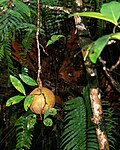 Cannonball mangrove Cannonball mangrove
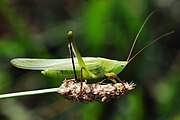 Ruspolia nitidula male Ruspolia nitidula male
 Female kob and calf Female kob and calf
|
You are receiving this because you added your name to the subscribers list of the WikiProject Tree of Life. If you no longer wish to receive the newsletter, please remove your name.
Sent by ZLEA via MediaWiki message delivery (talk) at 15:43, 1 September 2019 (UTC)
Please help
We are now less than 3k - how can you help? when you create a new article - please try to complete the biota assessment, https://en.wikipedia.org/Category:Unknown-importance_Australian_biota_articles when you deal with an older article - it is well worth going to the talk page and tweaking for biota.. Thanks for your work in biota articles !! cheers JarrahTree 00:27, 3 September 2019 (UTC)
- I asked about this elsewhere and had my head bitten off, so how about I do a bunch of articles I didn't create every now and then (which will add them to my watchlist)? ~ cygnis insignis 00:41, 3 September 2019 (UTC)
- you have something in your preferences that can de activate the watchlist link for edits (when I got to 70,000 on my watchlist things used to go bump in the night), decapitation is not an expected outcome from simply activating something like 'rrater and putting biota-importance = low.... - which the genii eds from places other than ours tend to do partial assessments (if any at all) JarrahTree 00:46, 3 September 2019 (UTC)
- btw in the current climate, elsewhere is a very dangerous place at the moment... JarrahTree 00:47, 3 September 2019 (UTC)
- That answers my next question. And having them on my watchlist is a good thing, as I see no other value in doing assessments I don't think I am suited to that sort of mass editing, or motivated to give over time that might be spent improving the article itself (rather than indicating someone else should pay attention to it) ~ cygnis insignis 01:00, 3 September 2019 (UTC)
- ahhh, someone else, indeed your concern and focus is far superior, as it improves content... and is to be of great importance... I just happen to have as a task and focus an unbelievably vast mountain of unassessed australian articles of all species and types that remain unwashed, unwatched, and rumsfeld territory unknown unknown stuff, which cries out to me assess, assess it says... JarrahTree 01:09, 3 September 2019 (UTC)
- I see the virtue in making sure that articles have had some review, but I would get distracted from the previous distraction. As I say, I am poorly suited to help out or willing to evaluate the relative merit of one article over another. ~ cygnis insignis 01:30, 3 September 2019 (UTC)
- ahh its even much more complicated even than that, we need a beer or two before the new year somehow... JarrahTree 01:33, 3 September 2019 (UTC)
- Sounds good, but not sure when I will get to the big smoke. ~ cygnis insignis 01:47, 3 September 2019 (UTC)
- maybe, just maybe elsewhere will be got to from here... JarrahTree 01:54, 3 September 2019 (UTC)
- Sounds good, but not sure when I will get to the big smoke. ~ cygnis insignis 01:47, 3 September 2019 (UTC)
- ahh its even much more complicated even than that, we need a beer or two before the new year somehow... JarrahTree 01:33, 3 September 2019 (UTC)
- I see the virtue in making sure that articles have had some review, but I would get distracted from the previous distraction. As I say, I am poorly suited to help out or willing to evaluate the relative merit of one article over another. ~ cygnis insignis 01:30, 3 September 2019 (UTC)
- ahhh, someone else, indeed your concern and focus is far superior, as it improves content... and is to be of great importance... I just happen to have as a task and focus an unbelievably vast mountain of unassessed australian articles of all species and types that remain unwashed, unwatched, and rumsfeld territory unknown unknown stuff, which cries out to me assess, assess it says... JarrahTree 01:09, 3 September 2019 (UTC)
- you have something in your preferences that can de activate the watchlist link for edits (when I got to 70,000 on my watchlist things used to go bump in the night), decapitation is not an expected outcome from simply activating something like 'rrater and putting biota-importance = low.... - which the genii eds from places other than ours tend to do partial assessments (if any at all) JarrahTree 00:46, 3 September 2019 (UTC)
Invitation
I can see by your TP discussions that you stay pretty busy, but I was hoping you could squeeze in a little time for WP:WikiProject Dogs and maybe even become a member. It appears to have been a free-for-all topic area for quite some time and just needs a little TLC from editors who understand the difference between a dog breed and a dog type. Talk 📧 04:39, 12 September 2019 (UTC)
- OMG as the son of a veterinarian and breeder, I get horrified when I see something like this... Duck for cover, claim diminished canine knowledge due to dog bite, diplomatic immunity due to your place of residence, - I know some who have left editing[REDACTED] due to arguments in dog articles... JarrahTree 05:05, 12 September 2019 (UTC)
Actually, we’re making progress. We have some outstanding collaborators, and we’re getting right down to the root of several issues, beginning with RS. See User:Atsme/sandbox and its TP, and feel free to weigh-in on that discussion if you’ve a mind to. Talk 📧 05:32, 12 September 2019 (UTC)
Hmmm although your motivation is clear and positive, having spent time watching the extensive OR and POV in dog articles, and the disappearance of the earlier set of eds on veterinary things, I have steered clear so far - thanks for the invite nevertheless... JarrahTree 05:40, 12 September 2019 (UTC)
- @JarrahTree: That is what I think mate, I've crossed paths with the user and said I value their earnest contributions. @Atsme: I have a look, but my focus ought to be finding things to quietly build on. ~ cygnis insignis 06:03, 12 September 2019 (UTC)
September 2019 Tree of Life Newsletter

- September 2019—Issue 006
- Tree of Life
- Welcome to the Tree of Life newsletter!
|
|
|
|
|
5
10
15
20
'02
'04
'06
'08
'10
'12
'14
'16
'18
This month saw a vanishingly rare occurrence for the Tree of Life: a new WikiProject joined the fold. WikiProject Diptera, however, is also unusual in being a classroom project. Whether or not this project will stay active once the semester ends remains to be seen. It does not bode well, however, that WP:WikiProject Vespidae—a creation from the same instructor at St. Louis University—faded to obscurity shortly after the fall semester concluded in 2014. WikiProject Vespidae is defunct and now redirects to the Hymenoptera task force of WikiProject Insects. Since 2014, the Tree of Life has seen a string of years where one or zero projects or task forces were created. The only projects and task forces created since then are WikiProject Animal anatomy (2014), Hymenoptera task force (2016), Bats task force (2017), WikiProject Hypericaceae (2018), and now WikiProject Diptera (2019). The year 2006 saw the greatest creation of WikiProjects and task forces, with fourteen still active and the remaining six as "semiactive", "inactive", or "defunct". |
 Enischnomyia fossil in Dominican amber Enischnomyia fossil in Dominican amber
 Lebombo wattle in the sand forest Lebombo wattle in the sand forest
 Betula leopoldae leaf fossil Betula leopoldae leaf fossil
 Pholiota squarrosoides Pholiota squarrosoides
 Lady Burton's rope squirrel Lady Burton's rope squirrel
 A child picks chili peppers in an Indonesian home garden. A child picks chili peppers in an Indonesian home garden.
|
You are receiving this because you added your name to the subscribers list of the WikiProject Tree of Life. If you no longer wish to receive the newsletter, please remove your name.
Sent by ZLEA via MediaWiki message delivery (talk) at 22:26, 1 October 2019 (UTC)
Thanks for your edits to Setirostris
I noticed you have made considerable edits to this page - where do you get the energy - but thanks for tidying up after me...I do have one question - is there a reason why the page is labelled Setirostris - rather than Setirostris elleryi? Thanks P Barden (talk) 02:35, 22 October 2019 (UTC)
- @P Barden: likewise, cheers for the effort on a bat article, it is an interesting species. Re the title, it is a convention for monotypic genera to be moved from the species name (I comply, but disagree). ~ cygnis insignis 12:36, 22 October 2019 (UTC)
October 2019 Tree of Life Newsletter

- October 2019—Issue 007
- Tree of Life
- Welcome to the Tree of Life newsletter!
|
|
|
|
|
|
By request from another editor, this month I wrote an overview of ways that content is featured on Misplaced Pages. Below I have outlined some of the processes for getting content featured: Did You Know (DYK)What is it: A way for articles to appear on the main page of Misplaced Pages. A short hook in the format of "Did you know...that ___" presents unusual and interesting facts to the reader, hopefully making the reader want to click through to the article How it works: The DYK process has fairly low barriers for participation. The eligibility criteria are few and relatively easy to meet. Some important guidelines:
The process for creating the nomination is somewhat tedious. Instructions can be found here (official instructions) and here ("quick and nice" guide to DYK). Experience is the best teacher here, so don't be afraid to try and fail a few times. The last few DYK nominations I've done, however, have been with the help of SD0001's DYK-helper script, which makes the process a bit more streamlined (you create the template from a popup box on the article; created template is automatically transcluded to nominations page and article talk page) Once your nomination is created and transcluded, it will need to be reviewed. The reviewer will check that the article meets the eligibility criteria, that the hook is short enough, cited, and interesting, and that other requirements are met, such as for images. If you've been credited with more than 5 DYKs, the reviewer will also check that you've reviewed someone else's nomination for each article that you nominate. This is called QPQ (quid pro quo). You can check how many credited DYKs you've had here to see if QPQ is required for you to nominate an article for DYK. Good Article (GA)What it is: A peer review process to determine that an article meets a set of criteria. This adds a How it works: You follow the instructions to nominate an article, placing a template on its talk page. Anyone can nominate an article—you don't have to be a major contributor, though it is considered polite to inform the major contributors that you are nominating the article. The article is added to a queue to await a review. In the ToL, it seems that reviews happen pretty quickly, thanks to our dedicated members. Once the review begins, the reviewer will offer suggestions to help the article meet the 6 GA criteria. Upon addressing all concerns, the reviewer will pass the article, and voilà! Good Article! Advice to a first-time nominator: Look at other Good Articles in related areas before nominating. If you're unsure about nominating, consider posting to the talk page of your project to see what other editors think. You can also have a more experienced editor co-nominate the article with you. Featured Article (FA)What it is: An exhaustive peer review to determine that an articles meets the criteria. This adds a How it works: You follow the instructions to nominate an article, placing a template on its talk page. Nominated articles are usually GAs already. Uninvolved editors can nominate, though the article's regular editors should be consulted first. Several editors will come by offering feedback, eventually supporting or opposing promotion to FA. A coordinator will determine if there is consensus to promote the article to FA. For an editor's first FA, spot checks to verify that the sources support the text are conducted. Advice to a first-time nominator: The Featured Article Candidate (FAC) process is a bit intimidating, but several steps can make your first one easier (speaking as someone who has exactly one). If you also did the GA nomination of the article, you can ask the reviewer for "extra" feedback beyond the GA criteria. You can also formally request a peer review and/or a copy edit from the Guild of Copy Editors to check for content and mechanics. First-time nominators are encouraged to seek the help of a mentor for a higher likelihood of passing their first FAC. Good and Featured Topics (GT and FT)What it is: It took me a while to realize we even had GT and FT on Misplaced Pages, as they are not very common relative to GA and FA. Both GT and FT are collections of related articles of high quality (all articles at GA or FA, all lists at Featured List). GT/FT have to be at least 3 articles with no obvious gaps in coverage of the topic, along with other criteria. For GT, all articles have to be GA quality and all lists must be FL. For FT, at least half the articles must be FA or FL, with the remaining articles at GA. How it works: Follow the nomination procedures for creating a new topic or adding an article to an existing topic. Other editors weigh in to support or oppose the proposal. Coordinators determine if there is consensus to promote to GT/FT. Advice to a first-time nominator: There are very few GT/FT in Tree of Life (5 GT and 11 FT). Most of the legwork appears to be improving a cohesive set of articles to GA/FA. |
 Female apple maggot Female apple maggot
|
You are receiving this because you added your name to the subscribers list of the WikiProject Tree of Life. If you no longer wish to receive the newsletter, please remove your name.
Delivered by MediaWiki message delivery (talk) at 03:34, 3 November 2019 (UTC) on behalf of DannyS712 (talk)
A survey to improve the community consultation outreach process
Hello!
The Wikimedia Foundation is seeking to improve the community consultation outreach process for Foundation policies, and we are interested in why you didn't participate in a recent consultation that followed a community discussion you’ve been part of.
Please fill out this short survey to help us improve our community consultation process for the future. It should only take about three minutes.
The privacy policy for this survey is here. This survey is a one-off request from us related to this unique topic.
Thank you for your participation, Kbrown (WMF) 10:44, 13 November 2019 (UTC)
ArbCom 2019 election voter message
| Hello! Voting in the 2019 Arbitration Committee elections is now open until 23:59 on Monday, 2 December 2019. All eligible users are allowed to vote. Users with alternate accounts may only vote once.
The Arbitration Committee is the panel of editors responsible for conducting the Misplaced Pages arbitration process. It has the authority to impose binding solutions to disputes between editors, primarily for serious conduct disputes the community has been unable to resolve. This includes the authority to impose site bans, topic bans, editing restrictions, and other measures needed to maintain our editing environment. The arbitration policy describes the Committee's roles and responsibilities in greater detail. If you wish to participate in the 2019 election, please review the candidates and submit your choices on the voting page. If you no longer wish to receive these messages, you may add |
November 2019 Tree of Life Newsletter

- November 2019—Issue 008
- Tree of Life
- Welcome to the Tree of Life newsletter!
|
|
| News at a Glance |
|
| Class is in Session in the Tree of Life |
|
In an interesting turn of events, this month's guest column is by my alter-ego, Elysia (Wiki Ed): *Puts on Wiki Education hat* Hi everyone, I'm Elysia and I work for Wiki Education. You may know me as Enwebb. I got a request last month to let you know how Wiki Education is intersecting with the Tree of Life subprojects. As one of Wiki Education's major goals is to improve topics related to the sciences, leading to our Communicating Science initiative, we end up supporting quite a few in the biological sciences. Here are the TOL-related courses active this term:
What is the impact of student editors in Tree of Life? 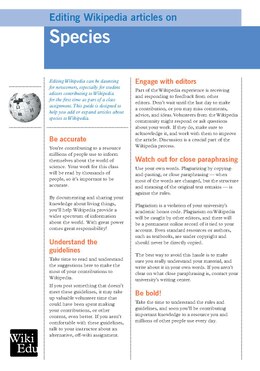 Altogether, these 16 courses have 347 student participants. As the end of the semester hasn't come yet, these numbers are still growing, but these students have:
Some of our best student work this semester (of any kind, not just biodiversity) has come from Agelaia's Behavioural Ecology course—you may remember this as the course that created WikiProject Diptera. The students have several Good Article nominations, including Dryomyza anilis, Anastrepha ludens, Aedes taeniorhynchus, Drosophila silvestris, Drosophila subobscura, and Ceratitis capitata. And while long-term participation from students is low, there's always the chance that we'll discover a Wikipedian. I had never edited before my Misplaced Pages assignment in 2017 and I'm still here nearly 20,000 edits later! After I poked around in the beginning of the semester, I had the realization that not many people write Misplaced Pages, and very few of those have a special interest in bats. If I didn't stick around to write the content, there was no guarantee that it would ever get done. Why are species articles suitable for students? Writing about taxonomic groups is a great fit for students, as it keeps them away from areas where new editors traditionally struggle. The notability policy is generous towards taxa, and there is little danger of a student's work getting removed for lack of notability; this is to be expected when students write biographies. Students may struggle with encyclopedic tone for biographies and stray towards promotional writing, but this is much less common when writing about a shrew or algae! Additionally, we're never going to run out of species to write about. Students have a bounty of stubs and redlinks to pick from. Creating a new article or expanding an existing one also takes a fairly predictable structure, with plenty of articles that students can model after. Don't students just create messes for volunteers to clean up? Our sincere hope is that, no, they don't, and we take several steps to try to minimize the burden on volunteer labor. With automatic plagiarism detection, alerts when students edit a Good or Featured Article, and notifications when students edit an article subject to discretionary sanctions, we try to stay ahead of problems as much as possible. We also review all student work at the end of each term. Ian, Shalor, and I are always happy to receive pings alerting us to student issues that need to be addressed. |
| November DYKs |
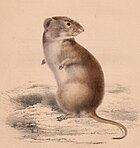 Brants's whistling rat Brants's whistling rat
 Female black-capped tanager Female black-capped tanager
|
You are receiving this because you added your name to the subscribers list of the WikiProject Tree of Life. If you no longer wish to receive the newsletter, please remove your name.
December 2019 Tree of Life Newsletter

- December 2019—Issue 009
- Tree of Life
- Welcome to the Tree of Life newsletter!
|
|
|
|
| News at a Glance |
|
| Editor Spotlight: Plantdrew |
|
We're joined this month by long-time editor Plantdrew, who's currently engaged in streamlining the taxonomic structure of Misplaced Pages articles via the automated taxobox system. How did you become a Wikipedian? What are your particular interests (besides the obvious of "plants")?
What projects are keeping you busy around the 'pedia at present?
What's your favorite plant?
What's your background like? How did you come to have a special interest in biology?
What's something that would surprised TOL editors about your life off-wiki?
Anything else you'd like us to know?
|
| December DYKs |
 Member of genus Chrysomya Member of genus Chrysomya
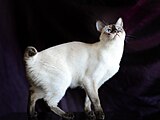 Mekong Bobtail Mekong Bobtail
|
You are receiving this because you added your name to the subscribers list of the WikiProject Tree of Life. If you no longer wish to receive the newsletter, please remove your name.
January 2020 Tree of Life Newsletter

- January 2020—Issue 010
- Tree of Life
- Welcome to the Tree of Life newsletter!
|
|
|
|
| News at a Glance |
|
| Vital Articles | ||||||||||||||||||||||||||||||||||||||||||||||||||||||||||||||||||||||||||||||||||||||||||||||||||
|
The vital articles project on English Misplaced Pages began in 2004 when an editor transferred a list from Meta-Wiki: List of articles every Misplaced Pages should have. The first incarnation of the list became what is now level 3. As of 2019, there are 5 levels of vital articles:
Each level is inclusive of all previous levels, meaning that the 1,000 Level 3 articles include those listed on Levels 2 and 1. Below is an overview of the distribution of vital articles, and the quality of the articles. While the ultimate goal of the vital articles project is to have Featured-class articles, I also considered Good Articles to be "complete" for the purposes of this list. Animals (1,148 designated out of projected 2,400)
Many articles have yet to be designated for Tree of Life taxonomic groups, with 1,942 outstanding articles to be added. Anyone can add vital articles to the list! Restructuring may be necessary, as the only viruses included as of yet are under the category "Health". The majority of vital articles needing improvement are level 5, but here are some outstanding articles from the other levels:
· Abiogenesis
· Sexual dimorphism |
| January DYKs |
 Fossil teeth of Alopias palatasi Fossil teeth of Alopias palatasi
 LuEsther T. Mertz Library LuEsther T. Mertz Library
 The Central Park mandarin duck The Central Park mandarin duck
 Christmas Island red crab Christmas Island red crab
 Salvador Dalí with his pet ocelot Babou Salvador Dalí with his pet ocelot Babou
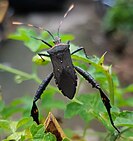 Passionvine bug Passionvine bug
 Tansy beetle Tansy beetle
 Winter bell Winter bell
 Doubleband surgeonfish Doubleband surgeonfish
|
You are receiving this because you added your name to the subscribers list of the WikiProject Tree of Life. If you no longer wish to receive the newsletter, please remove your name.
March 2020
Has got to a new stage of its progress in this confusing and chaotic world... https://en.wikipedia.org/Category:Unknown-importance_Australian_biota_articles = 0. Please help by when creating new biota articles for australia, to make sure the unassessed page stays the way it is adequately tagged, or please ask for help in doing so... More on the next stages of the Australian biota project soon... and thanks for whatever you have done for the project in any way since 2006 - JarrahTree 05:49, 1 March 2020 (UTC)
bookmark
List of asteroid close approaches to Earth
@JarrahTree: Ho! Dropped to this beach when nervous about celestial forebodings, and here you where … joy! Tell me that all is shipshape, and i will makeport to create more co-numdrums ~ cygnis insignis 14:15, 31 March 2020 (UTC)
g'day 99 - how auspicious - Line 999 - whatsmore !!! JarrahTree 14:20, 31 March 2020 (UTC)
- @JarrahTree: gaagh! we iz pwned by random rocking in the cosmos. ~ cygnis insignis 14:25, 31 March 2020 (UTC)
- too much james bond, been night after night, after night, sharks guns and thugs and things and there's a very large mosquito trying to watch the bond as well... either kafka, kubin, or lovecraft seem to be part of the conundrum JarrahTree 14:35, 31 March 2020 (UTC)
- nostalgia and boredom, hoorible diseases to those afflicted. "plenty o'toole" it sounds saucy, but … Where to immerse myself, bats again? I saw one the other night! ~ cygnis insignis 14:42, 31 March 2020 (UTC)
- too much james bond, been night after night, after night, sharks guns and thugs and things and there's a very large mosquito trying to watch the bond as well... either kafka, kubin, or lovecraft seem to be part of the conundrum JarrahTree 14:35, 31 March 2020 (UTC)
- keep it off the menu - no finger licking, and in no way drink the blood of the b.. - stay with squashed avoes and home grown chookeggs... at least in the deep south you dont have tas devils to feast on chooks compromised immune systems and james bond is all a bit too much for the intake system...even the alt health practitioner is daunted in the face of the current system JarrahTree 14:52, 31 March 2020 (UTC)
- @JarrahTree: howareya ~ cygnis insignis 14:04, 1 June 2020 (UTC)
- oh yeah - fair enough JarrahTree 14:07, 1 June 2020 (UTC)
- goodtokno :) ~ cygnis insignis 14:31, 1 June 2020 (UTC)
- sevenmonths gone ? trust not all is gone ? come back, come back, all is forgotten... JarrahTree 08:23, 19 January 2021 (UTC)
- good to see you still in circulation - is it in the demersal zone, or higher? - trust the oxygen is good quality ... JarrahTree 23:47, 18 March 2021 (UTC)
- @JarrahTree: Hah, thanks for the welcome back, all is well, hope it is for youse. I noticed some voids in article space and thought to pump a bit of oxygen into them. ~ cygnis insignis 05:43, 19 March 2021 (UTC)
- the cyclone(s) might just wash down your way before we might, heave away me hearties, middleton beach might not be washed away, and all the shanties might end up very wet, but then by that point we might have wellies, and drizabone accoutriments, but hopefully not when we wander your way sir. JarrahTree 13:57, 8 April 2021 (UTC)
- @JarrahTree: Hah, thanks for the welcome back, all is well, hope it is for youse. I noticed some voids in article space and thought to pump a bit of oxygen into them. ~ cygnis insignis 05:43, 19 March 2021 (UTC)
- good to see you still in circulation - is it in the demersal zone, or higher? - trust the oxygen is good quality ... JarrahTree 23:47, 18 March 2021 (UTC)
- sevenmonths gone ? trust not all is gone ? come back, come back, all is forgotten... JarrahTree 08:23, 19 January 2021 (UTC)
- goodtokno :) ~ cygnis insignis 14:31, 1 June 2020 (UTC)
February 2020 Tree of Life Newsletter

- February 2020—Issue 011
- Tree of Life
- Welcome to the Tree of Life newsletter!
|
|
|
|
| News at a Glance |
|
| The spread of coronavirus across Misplaced Pages | ||||||||||||||||||||||||||||||||||||||||||||||||
|
With the outbreak of a novel coronavirus dominating news coverage, Misplaced Pages content related to the virus has seen much higher interest. Tree of Life content of particular interest to readers has included viruses, bats, pangolins, and masked palm civets. Viruses saw the most dramatic growth in readership: Coronavirus, which was the 105th most popular virus article in December 2019 with about 400 views per day, averaged over a quarter million views each day of January 2020. Total monthly viewership of the top-10 virus articles ballooned from about 1.5 million to nearly 20 million.
 From October 2019 – December 2019, the top ten most popular bat articles fluctuated among 16 different articles, with the December viewership of those 10 articles at 209,280. For January 2020, three articles broke into the top-10 that were not among the 16 articles of the prior three months: Bat as food, Horseshoe bat, and Bat-borne virus. Viewership of the top-10 bat articles spiked nearly 300% to 617,067 in January. While bats have been implicated as a possible natural reservoir of SARS-CoV-2, an intermediate host may be the bridge between bats and humans. Pangolins have been hypothesized as the intermediate host for the virus, causing a large spike in typical page views of 2-3k each day up to more than 60k in a day. Masked palm civets, the intermediate host of SARS, saw a modest yet noticeable spike in page views as well, from 100 to 300 views per day to as many as 5k views per day. With an increase in viewers came an increase in editors. In an interview, longtime virus editor Awkwafaba identified the influx of editors as the biggest challenge in editing content related to the coronavirus. They noted that these newcomers include "novices who make honest mistakes and get tossed about a bit in the mad activity" as well as "experienced editors who know nothing about viruses and are good researchers, yet aren't familiar with the policies of WP:ToL or WP:Viruses." Disruption also increased, with extended confirmed protection (also known as the 30/500 rule, which prevents editors with fewer than 30 days tenure and 500 edits from making edits and is typically used on a very small subset of Misplaced Pages articles) temporarily applied to Coronavirus and still active on Template:2019–20 coronavirus outbreak data. New editors apparently seeking to correct misinformation continuously edited the article Bat as food to remove content related to China: Videos of Chinese people eating bat soup were misrepresented to be current or filmed in China, when at least one such video was several years old and filmed in Palau. However, reliable sources confirm that bats are eaten in China, especially Southern China, so these well-meaning edits were mostly removed. Another level of complexity was added by the fluctuating terminology of the virus. Over a dozen moves and merges were requested within WikiProject Viruses. To give you an idea of the musical chairs happening with article titles, here are the move histories of two articles: Severe acute respiratory syndrome coronavirus 2
Awkwafaba noted that "the main authorities, WHO and ICTV, don't really have a process for speedily naming a virus or disease." Additionally, they have different criteria for naming. They said, "I remember in a move discussion from the article then called Wuhan coronavirus that a virus name cannot have a geographical location in it, but this is a WHO disease naming guideline, and not an ICTV virus naming rule. ICTV may have renamed Four Corners virus to Sin Nombre orthohantavirus but there are still plenty of official virus species names that don't abide by WHO guidelines." |
| February DYKs |
 Thistle broomrape Thistle broomrape
 Painting of the Shelton Oak Painting of the Shelton Oak
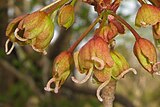 Female A. diabolicum flowers with curled stigmas Female A. diabolicum flowers with curled stigmas
|
You are receiving this because you added your name to the subscribers list of the WikiProject Tree of Life. If you no longer wish to receive the newsletter, please remove your name.
March 2020 Tree of Life Newsletter

- March 2020—Issue 012
- Tree of Life
- Welcome to the Tree of Life newsletter!
|
|
|
|
| News at a glance |
|
| A new WikiProject responding to the pandemic | ||
|
The newest Tree of Life WikiProject is about a taxon that is dominating the headlines, Severe acute respiratory syndrome coronavirus 2, and its many effects. We interviewed Another Believer, the founder of WikiProject COVID-19. This interview has been edited for length. Find the full interview here. Number of participants of WikiProject Covid-19
Thank you to Another Believer for your time, both in this interview and in this project. Interested readers can join WikiProject COVID-19. And please stay safe and healthy out there. --Awkwafaba |
| March DYKs |
|
You are receiving this because you added your name to the subscribers list of the WikiProject Tree of Life. If you no longer wish to receive the newsletter, please remove your name.
April 2020 Tree of Life Newsletter

- April 2020—Issue 013
- Tree of Life
- Welcome to the Tree of Life newsletter!
|
|
|
|
| News at a glance |
|
| Tree of Life's growing featured content | ||||||||||||||||||||||||||||||||||||||||||||||||||||||||||||||||||||||||||||||||||||||||||||||||||||||||||||||||||||||||||||||||||||||||||||||||||||||||||||||||||||||||||||||||||||||||||||||||||||||||||||||||||||||||||||||||||||||||||||||||||||||||||||||||||||||||||||||||||||||||||||||||||||||||||||||||||||||||||||||||||||||||||||||||||||||||||||||||||||||||||||||||||||||||||||||||||||||||||||||||||||||||||||||||||||||||||||||||||||||||||||||||||
|
Inspired by a March 2020 post at WikiProject Medicine detailing the growth of Featured Articles over time, we decided to reproduce that table here, adding a second table showing the growth of Good Articles. Tree of Life articles are placed in the "Biology" category for FAs, which has seen a growth of 381% since 2008. Only two other subjects had a greater growth than Biology: Business, economics, and finance; and Warfare. Percentage Growth in FA Categories, 2008–2019, Legend: Considerably above average, Above average, Average Below average , Considerably below average, Poor
*subset of natural sciences Unsurprisingly, the number of GAs has increased more rapidly than the number of FAs. Organisms, which is a subcategory of Natural sciences, has seen a GA growth of 755% since 2008, besting the Natural sciences overall growth of 530%. While Warfare had far and away the most significant growth of GAs, it's a clear outlier relative to other categories. |
| April DYKs |
 Jenny Jenny
 White-throated round-eared bat White-throated round-eared bat
 Formica fusca ants tending mealybugs Formica fusca ants tending mealybugs
|
You are receiving this because you added your name to the subscribers list of the WikiProject Tree of Life. If you no longer wish to receive the newsletter, please remove your name.
MediaWiki message delivery (talk) 02:40, 5 May 2020 (UTC)
May 2020 Tree of Life Newsletter

- May 2020—Issue 014
- Tree of Life
- Welcome to the Tree of Life newsletter!
|
|
| News at a glance |
|
| Interview with Jts1882 | |||||||||||||||||||||||||||||||||||||||||||||||||||||||||||||||||||||||||||||||||||||||||||||||||||||||||||||||||||||||||||||||||||||||||||||||||||||||||||||||||||||||||||||||||||||||||||||
|
This month we're joined by Jts1882, who is active in depicting evolutionary relationship of taxa via cladograms. Part of this includes responding to cladogram requests, where interested editors can have cladograms made without using the templates themselves. How did you come to be interested in systematics? Are you interested in systematics broadly, or is there a particular group you're most fond of? As long as I can remember I’ve been interested in nature, starting with the animals and plants in the garden, school grounds, and local wood, and then more general wildlife worldwide. An interest in how things are classified grew from this. I like things to be organised and understanding the relationships between things and systems (not just living things) is a big part of that. Biology was always my favourite subject in school and took up a disproportionate part of my time. My interest in systematics is broad as I’d like to comprehend the whole tree of life, but the cat family is my favourite group. What's the background behind cladogram requests? I see that it isn't a very old part of the Tree of Life Well I can’t take any credit for the cladogram requests page, although I help out there sometimes. It was created by IJReid and there are several people who have helped there more than me. I think the motivation is that creating cladograms requires a knowledge of the templates that is daunting for many editors. It was one way of helping people who want to focus on content creation. My main contribution to the cladograms is converting the {{clade}} template to use a Lua module. The template code was extremely difficult to follow and had to be repetitive (I can only admire the efforts of those who got the thing to work in the first place). The conversion to Lua made it more efficient, allowed larger and deeper cladograms, plus facilitating the introduction of new features. The cladogram request page was recently the venue for discussion on making time calibrated cladograms, which is now possible, if not particularly user friendly. What advice do you have for an editor who wants to learn how to make cladograms? The same advice I would give to someone facing any computer problem, just try it out. Start by taking existing code for a cladogram and make changes yourself. The main advice would be to format it properly so indents match the brackets vertically. Of course, not everyone wants to learn and if someone prefers to focus on article content there is the cladogram request page. Examples of cladograms Jts1882 has created, showing different proposed clades for Neoaves
Do you have any personal projects or goals you're working towards on Misplaced Pages? As I said I like organisation and systems. So I find efforts like the automated taxobox system and {{taxonbar}} appealing. I would like to see more reuse of the major phylogenetic trees on Misplaced Pages with more use of consensus trees on the higher taxa. Too often they get edited based on one recent report and/or without proper citation. Animals and bilateria are examples where this is a problem. Towards this I have been working on a system of phylogeny templates that can be reused flexibly. The {{Clade transclude}} template allows selective transclusion, so the phylogenetic trees on one page can be reused with modifications, i.e. can be pruned and grafted, used with or without images, with or without collapsible elements, etc. I have an example for the Angiosperm Phylogeny Group classification (see {{Phylogeny/APG IV}}) and one for squamates that also includes collapsible elements (see {{Phylogeny/Squamata}}). A second project is to have a modular reference system for taxonomic resources. I have made some progress along this lines with the {{BioRef}} template. This started off simply as a way of hardlinking to Catalog of Fishes pages and I’ve gradually expanded it to cover other groups (e..g. FishBase, AmphibiaWeb and Amphibian Species of the World, Reptile Database, the Mammalian Diversity Database). The modular nature is still rudimentary and needs a rewrite before it is ready for wider use. What would surprise your fellow editors to learn about your life off-Misplaced Pages? I don’t think there is anything particularly surprising or interesting about my life. I’ve had an academic career as a research scientist but I don't think anyone could guess the area from my Misplaced Pages edits. I prefer to work on areas where I am learning at the same time. This why I spend more time with neglected topics (e.g. mosses at the moment). I start reading and then find that I’m not getting the information I want. Anything else you'd like us to know? My interest in the classification of things goes beyond biology. I am fascinated by mediaeval attempts to classify knowledge, such as Bacon in his The Advancement of Learning and Diderot and d’Alembert in their Encyclopédie. They were trying to come up with a universal scheme of knowledge just as the printing press was allowing greater dissemination of knowledge. With the internet we are seeing a new revolution in knowledge dissemination. Just look at how we could read research papers on the COVID virus within weeks of its discovery. With an open internet, everyone has access, not just those with the luxury of books at home or good libraries. Sites like the Biodiversity Heritage Library allow you to read old scientific works without having to visit dusty university library stack rooms, while the taxonomic and checklist databases provide instant information on millions of living species. In principle, the whole world can now find out about anything, even if Douglas Adams warned we might be disinclined to do so. This is why I like Misplaced Pages, with all its warts, it’s a means of organising the knowledge on the internet. In just two decades it’s become a first stop for knowledge and hopefully a gateway to more specialised sources. Perhaps developing this latter aspect, beyond providing good sources for what we say, is the next challenge for Misplaced Pages. |
| May DYKs |
 Slender Scotch burnet moth on a flower Slender Scotch burnet moth on a flower
 Northern plains gray langur Northern plains gray langur
 Male vermilion flycatcher Male vermilion flycatcher
 Canada lynx Canada lynx
 Meerkats Meerkats
 Hilarimorphites burmanica Hilarimorphites burmanica
 Sun bear Sun bear
|
You are receiving this because you added your name to the subscribers list of the WikiProject Tree of Life. If you no longer wish to receive the newsletter, please remove your name.
Enwebb (talk) 19:40, 3 June 2020 (UTC)
Precious anniversary
| One year! |
|---|
--Gerda Arendt (talk) 08:51, 12 July 2020 (UTC)
- Thank you @Gerda Arendt: I'm hoping to be active again soon, Regards, ~ cygnis insignis 11:12, 6 August 2020 (UTC)
- Good to hear from you, take care. --Gerda Arendt (talk) 11:22, 6 August 2020 (UTC)
- And you, I'm in a fortunate part of the world. ~ cygnis insignis 11:26, 6 August 2020 (UTC)
- Good to hear from you, take care. --Gerda Arendt (talk) 11:22, 6 August 2020 (UTC)
June/July 2020 Tree of Life Newsletter

- June and July 2020—Issue 015
- Tree of Life
- Welcome to the Tree of Life newsletter!
|
|
| News at a glance |
|
| Categorizing life with DexDor |
|
DexDor is a WikiGnome with a particular interest in article categorization, including how organisms are categorized.
|
| June DYKs |
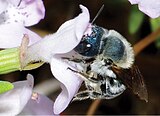 Blue calamintha bee Blue calamintha bee
 Culture of S. aureus Culture of S. aureus
 Ambay pumpwood Ambay pumpwood
 Heuglin's gazelle Heuglin's gazelle
 Gold-striped frog Gold-striped frog
|
| July DYKs |
 Amazon parrot Amazon parrot
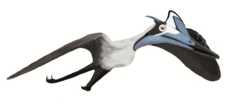 Life reconstruction of Pterodactylus antiquus Life reconstruction of Pterodactylus antiquus
|
You are receiving this because you added your name to the subscribers list of the WikiProject Tree of Life. If you no longer wish to receive the newsletter, please remove your name.
Delivered on behalf of Enwebb (talk) 16:33, 1 August 2020 (UTC)
August 2020 Tree of Life Newsletter

- September 2021—Issue 016
- Tree of Life
- Welcome to the Tree of Life newsletter!
|
|
|
|
| Hoax taxon sniffed out after nearly fifteen years |
|
Cross posted from the Signpost 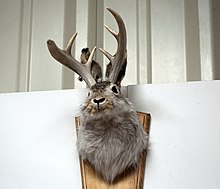 On August 7, WikiProject Palaeontology member Rextron discovered a suspicious taxon article, Mustelodon, which was created in November 2005. The article lacked references and the subsequent discussion on WikiProject Palaeontology found that the alleged type locality (where the fossil was first discovered) of Lago Nandarajo "near the northern border of Panama" was nonexistent. In fact, Panama does not even really have a northern border, as it is bounded along the north by the Caribbean Sea. No other publications or databases mentioned Mustelodon, save a fleeting mention in a 2019 book that presumably followed Misplaced Pages, Felines of the World. The article also appeared in four other languages, Catalan, Spanish, Dutch, and Serbian. In Serbian Misplaced Pages, a note at the bottom of the page warned: "It is important to note here that there is no data on this genus in the official scientific literature, and all attached data on the genus Mustelodon on this page are taken from the English Misplaced Pages and are the only known data on this genus of mammals, so the validity of this genus is questionable." Editors took action to alert our counterparts on other projects, and these versions were removed also. As the editor who reached out to Spanish and Catalan Misplaced Pages, it was somewhat challenging to navigate these mostly foreign languages (I have a limited grasp of Spanish). I doubted that the article had very many watchers, so I knew I had to find some WikiProjects where I could post a machine translation advising of the hoax, and asking that users follow local protocols to remove the article. I was surprised to find, however, that Catalan Misplaced Pages does not tag articles for WikiProjects on talk pages, meaning I had to fumble around to find what I needed (turns out that WikiProjects are Viquiprojectes in Catalan!) Mustelodon remains on Wikidata, where its "instance of" property was swapped from "taxon" to "fictional taxon". How did this article have such a long lifespan? Early intervention is critical for removing hoaxes. A 2016 report found that a hoax article that survives its first day has an 18% chance of lasting a year. Additionally, hoax articles tend to have longer lifespans if they are in inconspicuous parts of Misplaced Pages, where they do not receive many views. Mustelodon was only viewed a couple times a day, on average. Mustelodon survived a brush with death three years into its lifespan. The article was proposed for deletion in September 2008, with a deletion rationale of "No references given; cannot find any evidence in peer-reviewed journals that this alleged genus actually exists". Unfortunately, the proposed deletion was contested and the template removed, though the declining editor did not give a rationale. Upon its rediscovery in August 2020, Mustelodon was tagged for speedy deletion under CSD G3 as a "blatant hoax". This was challenged, and an Articles for Deletion discussion followed. On 12 August, the AfD was closed as a SNOW delete. WikiProject Palaeontology members ensured that any trace of it was scrubbed from legitimate articles. The fictional mammal was finally, truly extinct. At the ripe old age of 14 years, 9 months, this is the longest-lived documented hoax on Misplaced Pages, topping the previous documented record of 14 years, 5 months, set by The Gates of Saturn, a fictitious television show, which was incidentally also discovered in August 2020. How do we discover other hoax taxa? Could we use Wikidata to discover taxa are not linked to databases like ITIS, Fossilworks, and others?
|
| Spotlight with Mattximus |
 This month's spotlight is with Mattximus, author of two Featured Articles and 29 Featured Lists at current count.
I think I have a compulsion to make lists, it doesn't show up in my real life, but online I secretly get a lot of satisfaction making orderly lists and tables. It's a bit of a secret of mine, because it doesn't manifest in any other part of my life. My background is in biology, so this was a natural (haha) fit.
This experiment was just to see if I could get any random article to FA status, so I picked the very first alphabetical animal species according to the taxonomy and made that attempt. Technically, there isn't enough information for a species page so I just merged the species into a genus and went from there. It was a fun exercise, but doing it alone is not the most fun so it's probably on pause for the foreseeable future. Note: Aporhynchus is the first alphabetical taxon as follows: Animalia, Acanthocephala, Archiacanthocephala, Apororhynchida, Apororhynchidae, Apororhynchus
I would recommend getting a good article nominated, then a featured list up before tackling the FA. Lists are a bit more forgiving but give you a taste of what standards to expect from FA. The most time consuming thing is proper citations so make sure that is in order before starting either.
My personality in real life does not match my[REDACTED] persona. I'm not a very organized, or orderly in real life, but the[REDACTED] pages I brought to FL or FA are all very organized. Maybe it's my outlet for a more free-flowing life as a scientist/teacher.
The fact that[REDACTED] exists free of profit motive and free for everyone really is something special and I encourage everyone to donate a few dollars to the cause. |
| August DYKs |
 Woolly thistle Woolly thistle
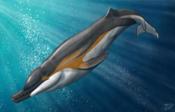 Life reconstruction of Ankylorhiza tiedemani Life reconstruction of Ankylorhiza tiedemani
 Female cicada laying eggs Female cicada laying eggs
 Acampe rigida Acampe rigida
|
You are receiving this because you added your name to the subscribers list of the WikiProject Tree of Life. If you no longer wish to receive the newsletter, please remove your name.
Delivered on behalf of Enwebb (talk) 17:10, 2 September 2020 (UTC)
ArbCom 2020 Elections voter message
| Hello! Voting in the 2020 Arbitration Committee elections is now open until 23:59 (UTC) on Monday, 7 December 2020. All eligible users are allowed to vote. Users with alternate accounts may only vote once.
The Arbitration Committee is the panel of editors responsible for conducting the Misplaced Pages arbitration process. It has the authority to impose binding solutions to disputes between editors, primarily for serious conduct disputes the community has been unable to resolve. This includes the authority to impose site bans, topic bans, editing restrictions, and other measures needed to maintain our editing environment. The arbitration policy describes the Committee's roles and responsibilities in greater detail. If you wish to participate in the 2020 election, please review the candidates and submit your choices on the voting page. If you no longer wish to receive these messages, you may add |
Redlinks and ill template
Hi, in this rev, you changed a use of template:ill to a bare redlink with the edit summary 'convert WD link Glenn Shea to redlink here, notable researcher and author'. However, the ill template presents the redlink as-is to users for so long as it *is* a redlink on enwiki; it automatically falls back to a normal blue wikilink as soon as the article's created, and adds value in the meantime by allowing users to see Wikidata information and links to other projects. I think your edit leaves the article strictly worse, but I won't revert it because I don't understand why it was made as the stated justification makes no sense to me; at least one of us is clearly confused, very possibly myself, and that calls for more caution in editing. Instead, would you consider a self-revert? 80.7.186.76 (talk) — Preceding undated comment added 15:17, 18 March 2021 (UTC)
- I didn't notice that a redlink is also given when I read the diff, so my rationale doesn't make sense, nevertheless there is a long-standing practice of deprecating inline links to sister sites. Linking to Wikidata seems backwards to this editor, although you seem to be convinced that this is accepted practice; it is entirely possible that there is a discussion I missed on that. I suppose I could create the article, as a way skirting your concern. ~ cygnis insignis 15:43, 18 March 2021 (UTC)
- See Help:Interlanguage_links#Inline_links_(links_in_the_text_of_the_article). I agree a link to Wikidata alone is less than perfectly ideal (I'd prefer all of Wikidata, Wikispecies and dewiki linked directly in the text in this specific case, since that's what's available, and it's not obvious which a reader may prefer; it gets thornier when there are many possible ILLs, but (a) that's not the case here and (b) that case, where there are many ILLs but no enwiki article, is likely to be quite rare), but it's what the template offers and it's strictly better than a redlink (as it was after your edit, because at least it points *somewhere* with further information and links) and I also think better than a direct link to another wiki (as it was before my edit) for reasons stated in the help page. 80.7.186.76 (talk) 16:23, 18 March 2021 (UTC)
- Linked from that Help page is a quick guide Where to place links and the MOS Links to sister projects which seems to support my position (although I was surprised to see some latitude given to wiktionary and source). This a matter to which I have given much thought, and I'm familiar with arguments for and against, just so you know it was not a knee jerk reaction. And it is an FA, not the place for what I reckon to be 'not standard practice'. You could put it back, but I must firmly warn you that I will then be compelled to create the article to make it go away. ~ cygnis insignis 17:26, 18 March 2021 (UTC)
Incomplete DYK nomination
![]() Hello! Your submission of Template:Did you know nominations/Frederick Strange at the Did You Know nominations page is not complete; if you would like to continue, please link the nomination to the nominations page as described in step 3 of the nomination procedure. If you do not want to continue with the nomination, tag the nomination page with {{db-g7}}, or ask a DYK admin. Thank you. DYKHousekeepingBot (talk) 20:12, 2 May 2021 (UTC)
Hello! Your submission of Template:Did you know nominations/Frederick Strange at the Did You Know nominations page is not complete; if you would like to continue, please link the nomination to the nominations page as described in step 3 of the nomination procedure. If you do not want to continue with the nomination, tag the nomination page with {{db-g7}}, or ask a DYK admin. Thank you. DYKHousekeepingBot (talk) 20:12, 2 May 2021 (UTC)
- cygnis insignis, it is important to finish this step in the DYK nomination process so the whole is completed. If you're having trouble with it, please let me know; I'm happy to help out. Thanks. BlueMoonset (talk) 18:22, 16 May 2021 (UTC)
- @BlueMoonset: Have you seen the nomination page? ~ cygnis insignis 18:40, 16 May 2021 (UTC)
- Yes. I read it, too. The nomination page still needs to be transcluded. BlueMoonset (talk) 20:09, 16 May 2021 (UTC)
- Oh, I thought someone had done whatever needed doing. I'm not inclined to work out the convolutions of DYK noms. ~ cygnis insignis 20:20, 16 May 2021 (UTC)
- Yes. I read it, too. The nomination page still needs to be transcluded. BlueMoonset (talk) 20:09, 16 May 2021 (UTC)
- @BlueMoonset: Have you seen the nomination page? ~ cygnis insignis 18:40, 16 May 2021 (UTC)
RfC on racial hereditarianism at the R&I talk-page
An RfC at Talk:Race and intelligence revisits the question, considered last year at WP:FTN, of whether or not the theory that a genetic link exists between race and intelligence is a fringe theory. This RfC supercedes the recent RfC on this topic at WP:RSN that was closed as improperly formulated.
Your participation is welcome. Thank you. NightHeron (talk) 22:24, 3 May 2021 (UTC)
Species list template
{{Species list}} makes the authorities small, so if you use small tags as well, as originally at Tomoxena, they become too small. You can generate wikilinks automatically by using {{Linked species list}} (see the documentation), but it doesn't abbreviate the genus name, so if you want to use the abbreviated genus + a wikilink, it's better, I think, just to use a normal list. (I could, I guess, modify Module:TaxonList to include the option to abbreviate in a species list, but I'm not sure if it would get much use.) Peter coxhead (talk) 18:41, 9 May 2021 (UTC)
- @Peter coxhead: Thanks, I should have realised that, not something I usually add to a taxobox. Once that section is opened all sorts of notes get added, better that is in the main text (even as a simple list) than compressed and boxified, I think, as a general rule of thumb. The ants were interesting. I'm fixing the taxobars I missed now. ~ cygnis insignis 18:56, 9 May 2021 (UTC)
- HOWEVER! i hasten to add, i will be using the linked species template as well, it persuaded me that the small formatting works to distinguish author and name. ~ cygnis insignis 19:07, 9 May 2021 (UTC)
- I agree with your first point, namely that the species list is better in the text of a genus article, so I usually automatically put
| subdivision = ]in the taxobox.{{Species list}}is useful for a list of synonyms in a Speciesbox, which of course shouldn't be linked. Peter coxhead (talk) 05:35, 10 May 2021 (UTC)- @Peter coxhead: Well no, linking a synonym would be silly. The documentation could be tweaked a little, making it clear that the coding sample contains two forms: linked genus and linked species. ~ cygnis insignis 11:08, 10 May 2021 (UTC)
- I agree with your first point, namely that the species list is better in the text of a genus article, so I usually automatically put
DYK nomination of Frederick Strange
![]() Hello! Your submission of Frederick Strange at the Did You Know nominations page has been reviewed, and some issues with it may need to be clarified. Please review the comment(s) at your nomination's entry and respond there as soon as possible. Thank you for contributing to Did You Know! BlueMoonset (talk) 20:07, 31 May 2021 (UTC)
Hello! Your submission of Frederick Strange at the Did You Know nominations page has been reviewed, and some issues with it may need to be clarified. Please review the comment(s) at your nomination's entry and respond there as soon as possible. Thank you for contributing to Did You Know! BlueMoonset (talk) 20:07, 31 May 2021 (UTC)
- Did you want to withdraw this nomination after all, then? There doesn't seem to be a workable hook... Thanks for your reply, and sorry for bothering you. BlueMoonset (talk) 02:27, 14 June 2021 (UTC)
Disambiguation link notification for September 22
An automated process has detected that when you recently edited Nina H. Kennard, you added a link pointing to the disambiguation page John Ingram.
(Opt-out instructions.) --DPL bot (talk) 05:55, 22 September 2021 (UTC)
Superb Stevenson addition

The photograph you just added to the Robert Louis Stevenson site and its caption are absolutely superb! Thank you so much for that. The Final Edict (talk) 10:43, 1 November 2021 (UTC)
- @The Final Edict: I thought it interesting, so glad someone else did; reading through I found little mention of 'Cummy' and the dedication fills a gap. The source is secondary, sort of, and there is some interesting bits and pieces about RLS (one is about his 'two mothers'). Cheers for your thought. ~ cygnis insignis 11:11, 1 November 2021 (UTC)
- P. S. A source for the issue is at a sister site, s:Index:Robert_Louis_Stevenson_-_a_Bookman_extra_number_1913.djvu, only started recently but if there is something in the table of contents that you want I can add it. ~ cygnis insignis 11:23, 1 November 2021 (UTC)
- Thank you, cygnis insignis! I'll look through it as soon as I get a chance, and look forward to it. You are a tremendous asset for Misplaced Pages and probably a hundred other endeavors! The Final Edict (talk) 11:40, 1 November 2021 (UTC)
- @The Final Edict: The article I mentioned is at s:Robert Louis Stevenson; a Bookman extra number 1913/Stevenson's Two Mothers, and I'm finding a lot of tributes in the form of poems and reviews from his friends and contemporaries. A glance at the history of the page shows you have been busy working on their article, hope that has been fun. I'm intending to get through Stevenson's works before long, another gap in my reading, let me know if you have a favourite. The image here is one I knew, but had failed to find when I looked before, it's what I suppose is considered typical of the better known works. ~ cygnis insignis 09:15, 3 November 2021 (UTC)
- Thank you, cygnis insignis! I'll look through it as soon as I get a chance, and look forward to it. You are a tremendous asset for Misplaced Pages and probably a hundred other endeavors! The Final Edict (talk) 11:40, 1 November 2021 (UTC)
WP:TPO
Hi. Sorry for an odd question. Will it be ok to capitalize some letters for better clarity in your post? You see, I accidentally did that assuming that it you will see it and probably appreciate it, but the other admins started reverting me as if like I am a vandal of some sort. Any feed back will be appreciated. I ask the same approval from @Enterprisey:.--Filmomusico (talk) 07:15, 13 November 2021 (UTC)
- @Filmomusico: Hi. I recommend that guideline be followed: the reasons for doing so have been outlined by others, especially @Cullen328:, at AN/I. ~ cygnis insignis 08:11, 13 November 2021 (UTC)
ArbCom 2021 Elections voter message
| Hello! Voting in the 2021 Arbitration Committee elections is now open until 23:59 (UTC) on Monday, 6 December 2021. All eligible users are allowed to vote. Users with alternate accounts may only vote once.
The Arbitration Committee is the panel of editors responsible for conducting the Misplaced Pages arbitration process. It has the authority to impose binding solutions to disputes between editors, primarily for serious conduct disputes the community has been unable to resolve. This includes the authority to impose site bans, topic bans, editing restrictions, and other measures needed to maintain our editing environment. The arbitration policy describes the Committee's roles and responsibilities in greater detail. If you wish to participate in the 2021 election, please review the candidates and submit your choices on the voting page. If you no longer wish to receive these messages, you may add |
Misplaced Pages:Articles for deletion/Mass killings under communist regimes (4th nomination)
Did you ever add this page to the AfD log? (See WP:AFDHOWTO, step III.) I can't find it on the log for any of the days from Nov. 22 through Nov. 25. Please add it to the current day's log since the AfD community was never informed of this AfD. Also please note that the "View log" link in the AfD goes to the nomination of this article from 2010, not the current one. Please fix that; I don't want to fix it myself because the AfD is so large that editing it slows down my computer. --Metropolitan90 (talk) 07:34, 25 November 2021 (UTC)
AfD Mass killings by Communist regimes
I am utterly disgusted at your Orwellian attempt to delete the above article.
I an deeply concerned going through your edit history that you are introducing bias into Misplaced Pages.
I am now going to watch your edits and revert those that introduce a Leftist slant. Ashley Payne (talk) 09:28, 25 November 2021 (UTC)

